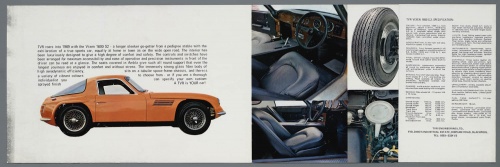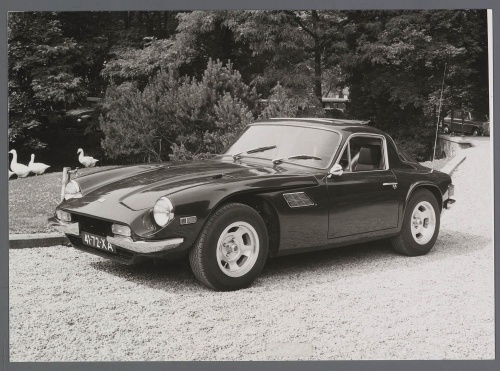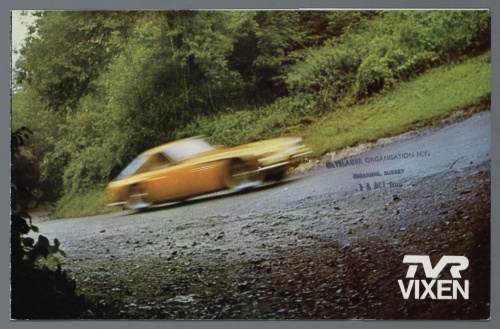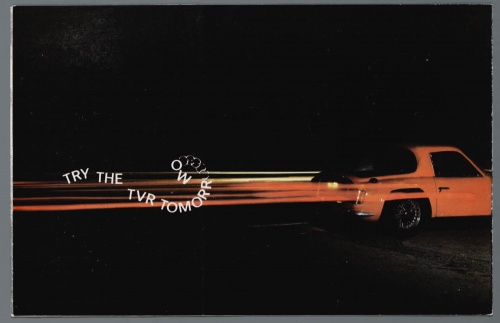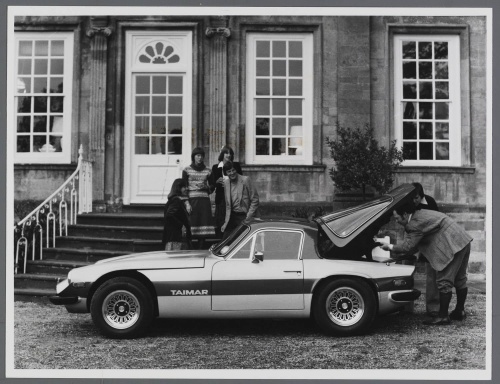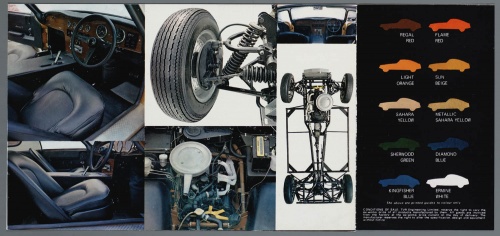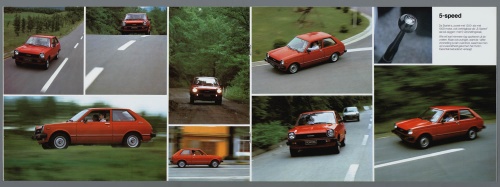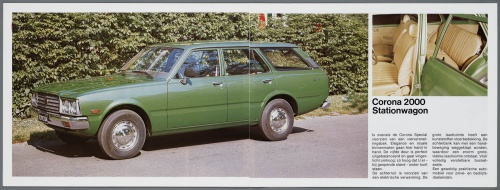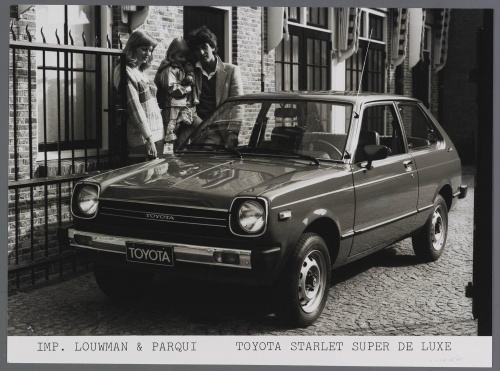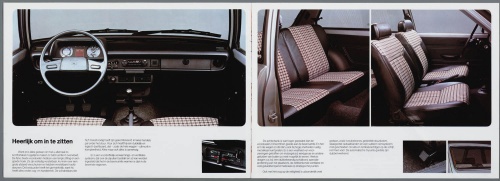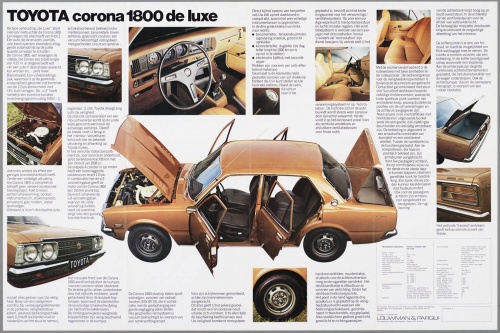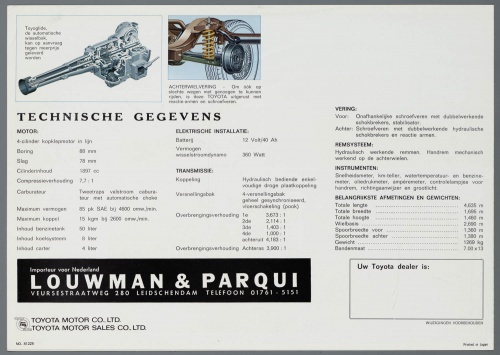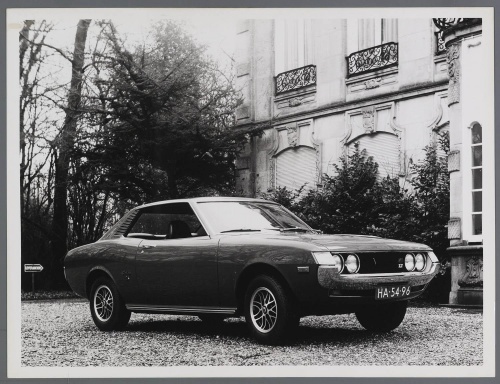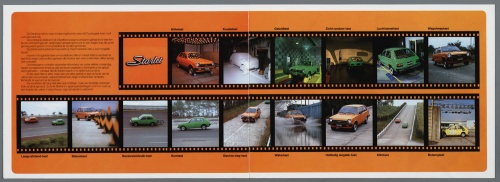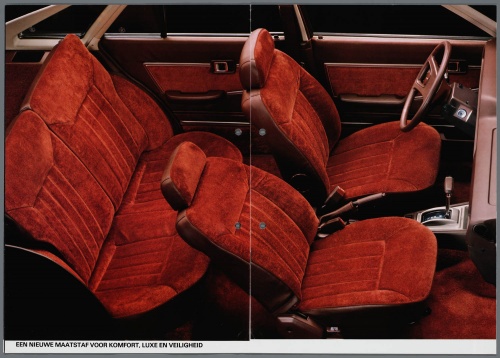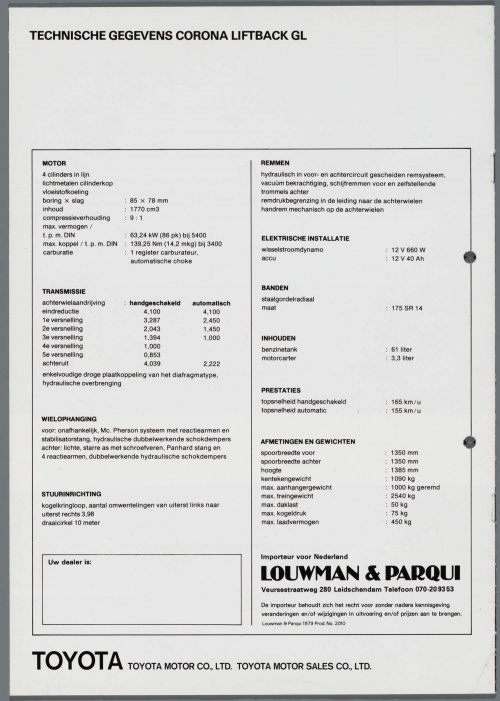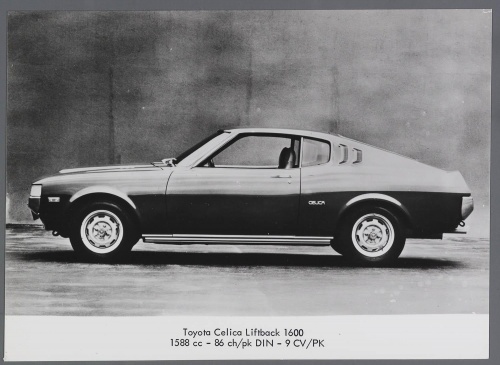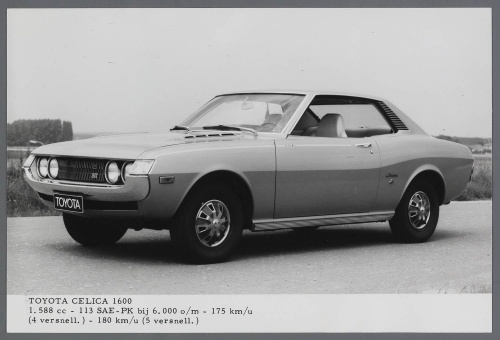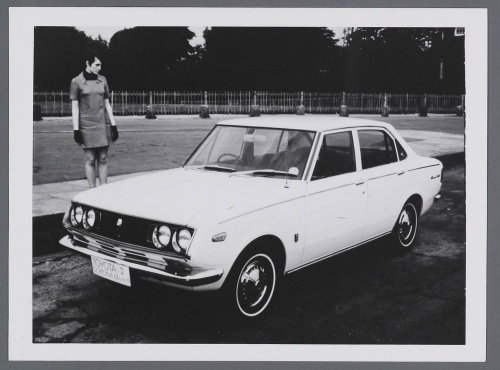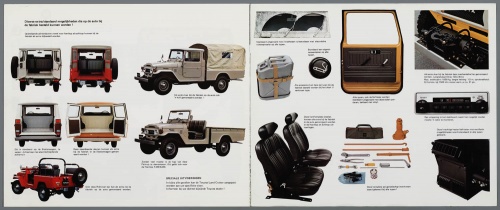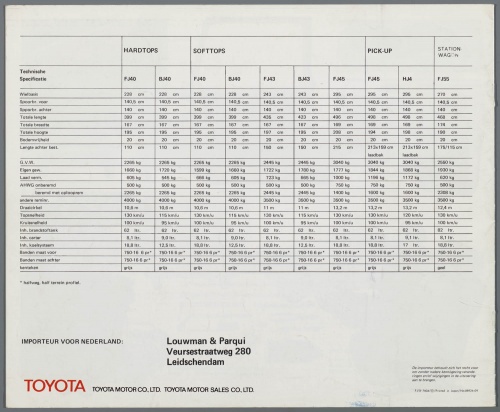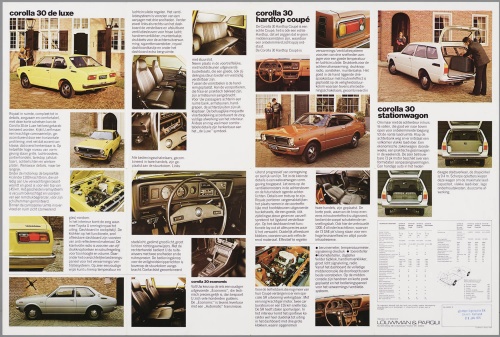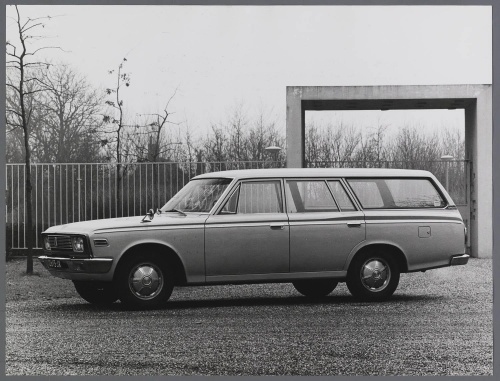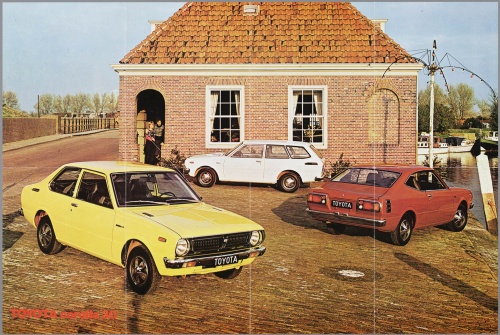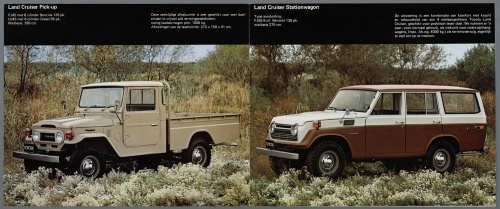Dutch Automotive History (part 60) Toyota, Trabant, TVR (100 photos)
TVR (Blackpool, UK, 1957-)
The name of the company is made up of the letters included in the first and last name of its founder, Trevor Wilkinson. The first sports cars were assembled by hand in England back in 1954, but their tests were carried out in the USA. The cars were supposed to be sold in North America under the name "Jomar".
Under the TVR brand, they were initially offered as a set of parts, since mass production of finished vehicles was delayed due to financial problems. To get out of the crisis at the end of 1957, Wilkinson purchased premises in Blackpool, where in January 1958 he finally managed to assemble cars. The first Grarrtura coupe model was available with a choice of a 1172 cm3 Ford engine with side valves or a 1098 cm3 Coventry-Climax engine, the former being available with a supercharger, thanks to which it developed a power of 54 hp and accelerated the car to a speed of 172 km/h.
Options with an 85-horsepower Climax engine reached speeds of up to 200 km/h. In 1959, the Trantura-P appeared with a short and low body. The previous Ford engine was first replaced by an engine from Ford Anglia with a displacement of only 997 cm3, and then by a Coventry-Climax with a displacement of 1216 or 1489 cm3. In the early 60s, the Grantura III used Ford Classic engines with a capacity of 1340 cm3, as well as units from MGA with a displacement of 1622 cm3. At the New York Auto Show in 1963, the Mk-III model was presented " with new suspension from the Triumph Herald car and a 1.8-liter engine from the MGB, but the costs of creating such a wide range of sports cars put the company in a difficult financial situation. As a result, TVR was forced to transfer production to the newly created company Grantura Engineering A year later its name changed to TVR Cars Ltd.
The next turn in the history of the company occurred in 1964, when an American customer, who could not wait for the Grantura-SH car he ordered with an MGB engine, asked dealer Jack Griffith to install an American Ford V8 engine on it working volume 4727 cm3. This is how the new Griffith-200 series appeared, followed in 1965 by the improved Griffith-400 model. In the same year, Trevor Fiore built a prototype of the new Trident car, but TVR went bankrupt again and the Trident Car company began producing the cars.
At the end of 1965, Arthur Lilley and his son Martin founded a new company, TVR Engineering, which in the middle of the next year created a prototype of the Tina sports coupe on the Hillman Imp chassis. "(Hillman Imp), however, did not go into production. In 1967, the Vixen was released on the Trantura chassis with a 1.6-liter Ford Cortina GT engine, which was then joined by the S-2, S-3 and S series -4" with an extended wheelbase, designed for the US market. In 1969, the Tuscan was born on the Vixen chassis with a 4.7-liter Ford V8 engine, which a year later replaced the Ford V6 engine in 2994 cm3.
In 1971, a new chassis was developed that was suitable for both the 1.3-liter Triumph engine, which was used on the lightweight Spitfire convertible, and the 6-cylinder power unit with a displacement of 2498 cm3. The last engine gave the new series the index "2500". The modernized version "2500M" was produced until 1977. In parallel, since 1972, the ZOOOM coupe with a 3-liter Ford V6 engine was produced.
In 1975, disaster struck the company: a fire destroyed all the chassis prepared for assembly. The company's management showed ingenuity and skill to overcome the catastrophic consequences. Three months later, production resumed. By the middle of the year, sales began of the ZOOOM Turbo modification, which reaches speeds of over 240 km/h. A year later, the Taimar variant was included in the program with a third rear door, which was too heavy for a fast car. In 1980, the Tasmin series appeared with a wedge-shaped body and Ford V6 or Rover V8 engines with a displacement of 2792 and 3532 cm3, respectively, which gave the cars the designation “280i” and “350i”. In 1984, the “390SE” model with a 3.9-liter Rover V8 unit was released, and 5 years later they began producing “400SE” and “450SE” cars equipped with 4.3 and 4.5 liter V8 engines with a capacity of 279 and 324 hp
In 1991, a new Griffith appeared with a more modern body shape. Today it is offered with a V8 engine of 3947 or 4997 cm3 with 240-340 hp. Since 1992, the Chimaera convertible has been produced on its basis, and since 1994, the Cerbera coupe with a V8 engine with a displacement of 4185 cm3 and 349 hp. In 1996, they introduced the “younger brother” of the big “Griffith” - the “Griffith Speed Six” with a 6-cylinder 4-liter Jaguar engine with a power of 330-380 hp.
TOYOTA (Toyota City, Japan, 1937-)
The Toyoda Automatic Loom Works company has been producing weaving machines since the end of the last century. In 1935, it built an experimental 5-seater Toyoda A-1 car, after which the management decided to mass produce passenger cars. In August 1937, Toyota Motor Company was founded. The company began with the release of the AA model, which resembled the American Airflow car of the Chrysler concern of 1934. The first Toyota was offered with an in-line 6-cylinder overhead valve engine with a displacement of 3389 cm3 and 65 hp, similar to the 1933 Chevrolet Six engine. The model was produced until 1943.
The first post-war car (1947) was the light Toyopet-SA (Toyopet) with a 27-horsepower engine with a displacement of 995 cm3 and a two-door sedan body. However, its mass production began only in the fall of 1949, when the American occupation authorities finally lifted the ban on the production of passenger cars for individual use. In 1951, production of the universal all-wheel drive Land Cruiser began. In 1955, when about 10 thousand cars rolled off Toyota assembly lines annually, the Crown sedan appeared with an engine displacement of 1453 cm3. In 1957, the well-known and popular Corona model was born with engines with a displacement of 995-1453 cm3. In 1960, they released a small series of Crown Sport cars with a 1.5-liter 72-horsepower engine and a fiberglass body. A year later, a small-sized model “Publica” appeared with a 2-cylinder air-cooled engine of 697 cm3.
In 1962, Toyota celebrated the production of its millionth car. The journey took 25 years, but the 2 millionth car was assembled within 3 years. The most popular and famous model, the Corolla, appeared in 1966. It had a 2-door sedan body with a length of 3845 mm and was equipped with a 4-cylinder engine of 1087 cm3 with a power of 60 hp. At the same time, the 2000GT sports car with a 6-cylinder engine of 1988 cm3 went on sale. The following year, they released a top-class model, the Century, with a 3.0-liter V8 engine. Over the next three years, the Corolla was equipped with 4-cylinder engines with a displacement of 1166; 1407 and 1588 cm3, "Corona-I" received an engine of 1858 cm3, and "Crown" was sold with a V8 engine with a displacement of 2599 cm3. In 1969, the millionth car of the popular “Crown” brand appeared.
In December 1970, they released the Celica GT coupe with an engine displacement of 1588 cm3 and the Carina sedan with engines of 1407 and 1588 cm3. In 1972, Toyota celebrated the production of its 10 millionth car (Corolla's share was 3 million units). At the same time, the Cressida middle-class sedan appeared with 4- and 6-cylinder engines in 1968 and 2563 cm3.
The following year, based on the Corolla, they produced the small-sized Starlet with sedan and coupe bodies. "Starlet" became the heir to the "Public" series. In 1979, the Toyota range included the Starlet coupe (1166 and 1290 cm3) and Selika (1588 and 1968 cm3), the Tercel, Karina (1588 and 1968 cm3) and Cressida sedans. (1968 cm3). At the top of the program was the luxury Crown with a 6-cylinder gasoline engine with a displacement of 2563 cm3 or a 4-cylinder diesel engine with a displacement of 2188 cm3.
In order to consolidate its leading position in Japan and on the world market, and the total production volume of all Toyota cars in 1980 exceeded 3 million units, the company significantly expanded its production program, introducing several new series of models and modernizing a number of already popular ones. families: Tercel, Corsa, Starlet, Corolla, Sprinter, Karina and Crown. In 1982, a new front-wheel drive mid-class Camry model appeared, offered with in-line 4-cylinder engines and a V6 engine with a displacement of 2506 cm3. In 1984, Toyota became the world's third largest manufacturer of passenger cars after the American concerns General Motors and Ford. In the same year, the compact sports coupe "MR2" with a rear-engine layout appeared. The following year, a new front-wheel drive sports series "Selika" was shown with highly accelerated engines with a displacement of 1.6-2.0 liters. In 1988, the Selika Turbo was introduced in an all-wheel drive version with a 185 hp turbocharged engine. Soon the high-capacity station wagon "Previa" appeared. By the end of the 80s, the entire Toyota program was modernized.
TRABANT (Zwickau, GDR/Germany, 1959-1991)
The history of the Trabant passenger car with a plastic body is closely connected with the history of the development and death of the GDR. On the basis of the old German automobile plants "Audi" and "DKW" in 1949, the "People's Enterprise IFA" (IFA) arose, producing IFA cars of the "F-8" and "F-9" models, similar to the company's pre-war products DKV. In 1956developed its own machine of the "R-70" type. Since 1959, the Zwickau Automobile Plant (AWZ) began production of the mini-displacement front-wheel drive Trabant of the P-50 type with a 2-door body and an in-line 2-stroke 2-cylinder engine with a displacement of 499 cm3. In 1963, on the R-600 model, the engine capacity was increased to 594 cm3. Soon the modernized R-601 series appeared. In 1979, the lightweight open version “Tramp” was included in the range. After the unification of East and West Germany in 1989, production of Trabants ceased, and the plant was acquired by Volkswagen.
